View Morocco Photography
Prior to 10 months ago, the only time I had anyone utter the word fez was on the TV show Happy Days. I’m sure that you all remember Mr. Cunningham – as Grand Poobah of his lodge he wore a fez hat which indicated his position. That image of the red hat and the tassel had stuck in my head for my lifetime…one of my few experiences with the exotic Arabian culture to date.
The second time I ever heard the word fez was at my going away party last year. One of my friends gave me a book about 1000 places to see before you die and everyone at the party was browsing through it. My friend, Todd, stopped at the entry for Fez. He excitedly asked me if I was going to Fez on this around the world adventure. Visions of Mr. C came to mind and a confused look came across my face. I had no idea what or where Fez was – but I was pretty certain that it wasn’t in Milwaukee! He said that he had heard about Fez and that it was one of the best places to visit, a very authentic and mystical town. I still had no idea what country it was even in – so I just nodded and said “who knows where I’ll end up, but if I end up in Fez, I’ll let you know.” The next morning in my hung over state, I grabbed the book and looked up Fez to read about it…it was in Morocco.
For some reason that conversation stuck with me throughout my travels…maybe it was the Mr. C image, or maybe it was the exotic sounding name, or maybe it was Todd’s enthusiasm about the place – whatever it was, I felt like I needed to see it. When I decided to change my plans and travel through Morocco, I knew that I had to make it to Fez. I chose a tour route that led me through Fez for a few days as I felt that it would be one of the highlights of Morocco.
Table of Contents
Touring the Medina in Fez, Morocco
The draw to Fez is that it is the most intact medieval city of the Arab world. It is suspended in time somewhere between the modern world and the Middle Ages. Modern World: electricity; Middle Ages: everything else in Fez. Here are the numbers: there are about 800,000 people living in the Medina, 9,500 streets, approximately. 250 mosques, 10,000 donkeys, and about 100,000 satellite dishes. These are unofficial numbers of course – but they are my best guess.
We arrived in Fez after an 11 hour minivan ride through the Moroccan countryside. This was a doozy of a road trip – it was well over 100 degrees out and air conditioning that could be only used for short bursts of time in order to not overheat the car, brakes that overheated, and just a long, long journey. The longest time I’ve spent in a car since living back in the Midwest when I used to be too poor to take a plane! We arrived in Fez in the evening and our lodging was in the new city – a little more modern with internet cafes, bars, and a McDonalds…yes, a McDonalds. I have to admit – one of the things that I am really starting to miss is a good American burger. I’ve tried ordering a few and they are never the same. So when I heard there was a McDonalds in Fez, I knew that I could quench my craving. Yes, yes, yes – I’m sure many of you are appalled by this – as McDonalds is not necessarily the epitome of American burger. However, until you’ve set foot in my shoes, traveled for 10 months around the world, eating out every night of the week, being at the mercy of the local cuisine night after night, not being able to EVER drink water from a tap, then you can judge my eating choices! I sat down to my Big Mac and fries and orange juice and enjoyed every last bite…it was ecstasy. Ok – so there’s nothing medieval about a Big Mac; however, the real adventure started the next morning when our local guide, Hakima, greeted us bright and early. She was to take us on a day through Fez – the old city. It included a Medina tour, shopping and bargaining in the souks, visits to the pottery manufacturer, leather tannery, carpet maker, and lunch.
The Grand Poobah of views
First we went to a great panoramic point high above the old Medina to get an overview of the maze that we were about to enter. The first thing I noticed as we stood on a high hill looking over the Medina was the number of satellite dishes on the buildings. Strange things catch my eye sometimes, and I had never really seen so many dishes occupying so little space – each beaconing in the same direction…as if they were calling ET to come home. Each building has no less than 8 satellite dishes on the roof. At this point, the old Medina felt more extraterrestrial than medieval to me. However, I guess the satellite dishes didn’t surprise me too much as even most of the world’s undeveloped, poorest cities and towns have satellites. It’s how the majority of the developing world is able to view the world around them these days. It is likely that all of the Fassis (people of Fez) are watching old episodes of Happy Days and are getting a good laugh out of Mr. C’s fez hat! After I got past the satellite dishes, I could focus on the thousands of buildings that were displayed in front of me. It was huge and a bit disorienting. If you really focused your eye, you would see all of these towers sticking up amongst the buildings – the 250 some mosques that were intermixed in the Medina. You could also see puffs of dark smoke coming from certain areas which indicated that pottery was being fired which is where we headed to next. We saw the intricate art of pottery making and mosaics and how everything was made by hand – in painstaking detail. Each mosaic piece was cut by hammer and chisel and then pieced together as if it were a giant jigsaw puzzle. This was one of the few places that employed women. Some women intermixed with the men in the painting area – but this was a relatively new development. The majority of the pottery work was difficult manual labor, so the only place tat the women were allowed to work was on the more artistic side of the creation.
Before entering the Medina, Hakima first warned us about the usual pickpockets and urged us to stay together the best we could, and to not be discouraged by the begging children that would be following us around. Since the Medina was still really a functioning Medina for locals, we would stick out rather blatantly…seven caucasians, toting camera and backpacks – of course we were going to stick out! She also warned us to listen for the word “Ballack!” meaning “watch out/move out of the way” which we would hear when the numerous donkey carts were trying to get around the Medina. The Medina did not hold any motorized vehicles due to the narrow, curving streets and alleys and the only mode of transportation was donkeys and carts. Basically, we learned that we needed to keep on our toes.
The sights of the Medina in Fez
The moment you entered the big arched gateway you inhaled the smell, taste and sound of the markets. We were surrounded by the sounds of people and music, we could smell the rich spices intermixed with the smell of olives, and your eyes were entranced by the rich colors and textures that surrounded you. I think I honestly walked for the first 20 minutes with a dumb stare on my face as I took it all in. We entered through an area of food/produce/butchers markets – which is always a site. The shops themselves were normally very small – no bigger than a bathroom and they were all connected with no space in between the buildings. The only space to walk was the narrow ‘road’ which we were sharing with a multitude of locals and donkeys. Many of the shops specialized in just one thing to keep things simple. There was a garlic shop, across from a tomato shop. Imagine if you owned a store the size of a closet and only sold garlic…only garlic…for your whole life. Personally – I would go crazy…but that’s life in the Medina. The men that sold olives were also artists, slowly putting together these elaborate olive displays intermixing patterns with the various colored olives. Seriously, these men should be running the olive department at Fairway…the olive displays were so pretty that you really didn’t want to buy any olives for fear of ruining the display!
Goat and camel heads hung from big hooks on the corners of shops. Many of the goat heads were split open to indicate that the brain had been taken out and was probably being sold somewhere on the nearby table. The rest of the head was sold for the tongue, and additional meat that could be found on it. Like most cultures, they use all parts of the animals. Next to the goat heads hung long stretchy stomachs for sale. They were a dull grayish brown color with a ton of texture – not very appetizing to me, but to each his own. Full cow and goat carcasses hung from big butcher hooks outside – on display out in the hot sun. All of the carcasses proudly had the testicles still attached and displayed so that you knew that you were buying male meat. In this culture, people only ate meat from male animals, as the females were only meant for breeding; therefore, the testicles needed to be displayed so that you knew what you were getting! God forbid if they slip some inferior female meat in your purchase! We also learned that the shutters and buildings are painted blue because the color blue is thought to keep flies away. I’m not too sure how well that was working at the butchers…as the hanging carcasses seemed like the giant fly tape that used to hang in our garage at home!
In the Medina, there were special sections for sharpeners (scissors, knives, etc), bowl makers, dyers, tailors, jewelry makers, rug makers…every kind of trade you could imagine. The work was never easy…it was hard work to be done with the hands. The rugs were made by hand, the large brass bowls were pounded from flat metal into a bowl shape before our eyes, the silk thread was dyed from it’s virginal white to every color imaginable…it was as if you had stepped back to the middle ages. There were even community ovens. Throughout the streets you would see these young boys, about 6 years old, carrying a wooden platter with bread dough to the community oven to be baked. Most of the locals did not have an oven in their homes, so they all shared one in the neighborhood. The kids were responsible for taking it to the baker and picking it up.
The smells of the Medina in Fez
I had been anxiously anticipating seeing the leather dying vats in Fez. Earlier in the year I went to a photo exhibition and saw a photo of people working in the leather vats and I had always wanted to go see it with my own eyes. Finally, we arrived at the famous vats of Fez. We went into a leather store that was situated with a great aerial view of the vats. It was the middle of the day – hot, hot, hot – the smell around this area was distinct – animal flesh. We were given sprigs of mint to smell to try to get our senses used to the foul odor. The vats were out in the direct sun…and organized for leather dying and wool dying. The white stone vats were for wool and the brown stone vats were for leather. When you looked down at them it looked like a little honeycomb of activity…circular vats and men buzzing all around them. The vats were filled with colors made from natural materials such as plants and spices and large leather pieces were submersed and soaked in the dyes. These vats were big – and this was a hands-on job. The men would cover their bodies with Vaseline in order to keep the color from dying their skin, and then they get in the vats to properly soak the leather – imagine Lucy and Ethel in the vat of grapes…now you get the picture. This was not easy work – in fact – I think it ranks right up there with jobs I never want to do! I was mesmerized by their work though – I could have watched them all day. While the rest of my group shopped for leather jackets, purses, and slippers – I put on my telephoto lens and shot about 50 photos of the dyers glistening in the hot sun.
After a delicious lunch with the locals we stopped at one of the many carpet shops next. Buying carpets in this part of the world is like buying a car – it is a production and a game – not to be missed. The carpets are beautiful and definitely one of the major commodities of this area, so it’s well worth a stop to browse. Yet, there really is no concept of browsing as we know it. It’s not like Ikea with racks of hanging rugs to patiently browse through at your leisure. Instead, it’s a well-oiled selling machine – one in which you are befriended, welcomed into a home, seated to have some tea, see how the carpets are hand made, get educated on the various types of carpets and quality, and then after about 45 minutes of this friendly banter in which you now formed some kind of bond with the person – they get down to business and ask…”So, who’s interested in buying a carpet today?” You are immediately startled out of your social world into the high finance world of carpets! If you say “well, I think I’m interested.” Then prepare yourself for another hour or so of selling, bargaining, and dropping a lot of money (all well worth it if you really were looking for an authentic handmade carpet).
They take you off in a little room of carpets to interrogate you…oops…I mean ‘work with you’ on a more individual basis, and they parade out tons of carpets in front of you trying to narrow down exactly what you are looking for. I decided to only be an observer of the process this time – there were others in our group that were buyers. The carpets were absolutely stunning, however didn’t really fit my décor – so I enjoyed being a spectator and watching other people spend money!
Most of the shopping experiences were like this in some shape or form. You want to buy authentic clothing, material, wood working, furniture, silk, jewelry – they all sit you down and befriend you first, do a little demonstration and then find out if you are interested – it’s a pretty good sales tactic! The whole day was rather educational and I managed to somehow hold on to most of my money – mainly for the pure reason that I refuse to carry any additional weight in my already heavy luggage!
We also made a stop at an herbal medicine man’s shop. He sat us down and showed us all of the various herbal remedies that the locals use as well as the natural makeup and soaps that are used. At the end of his demonstration he asked if anyone had any questions. Without really thinking I asked what he recommended for dry eyes. My eyes have been quite a mess lately – the dry, dusty, sandy conditions of Morocco aren’t what the optometrist ordered! My eyes have struggled in these conditions. The ‘medicine man’ quickly said – yes, I have just the thing, and pulled down this bottle of clear liquid and told me to come over to the bench and lay down. Without even thinking I obliged and laid down on the bench and let him start to pour this liquid into that my eyes. At that moment I realized that I was letting some Moroccan guy that I just met pour a unknown liquid into my eyeballs…maybe not the best idea in the world. To my delight, when I opened my eyes again I could see the world around me still – and my eyes felt good, it was rather soothing. After the fact he told me that it was rose water and it was used to soothe dry, tired eyes.
The sounds of the Medina in Fez
It was a very long day in the Medina. We picked up some fresh fruit for dinner and finally left the Medina around 9PM…and the place was still filled with life. The rest of my stay in Fez was more low key. The next night we went out for a sophisticated dinner to say our farewell to the lively city. We had drinks at the Sofitel Hotel which overlooked the Medina. It was fun to be in a proper hotel again…doormen, cushy seats, great views…a far cry from my hotel room with the shower over the toilet! We had drinks at sunset and listened to the 250 mosques all do their ‘call to prayer’ at the same time that night. It was a beautiful echoing sound that slowly traveled through and above the Medina. Finally that night we had a Moroccan feast at an old restored riad (house) turned hotel. The food was outstanding and the atmosphere warm. I have successfully replaced my old Fez image of Mr. C in his Grand Poobah hat with a new image of the city of Fez. Both are a step back in time, but only one is the real thing.

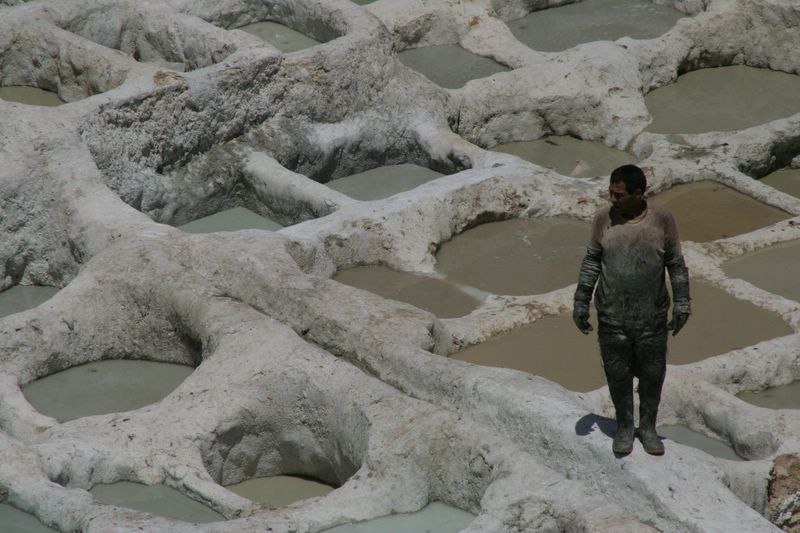
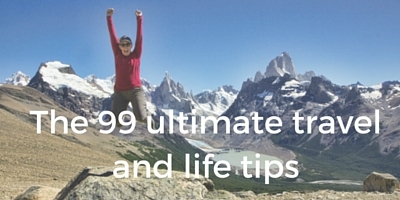
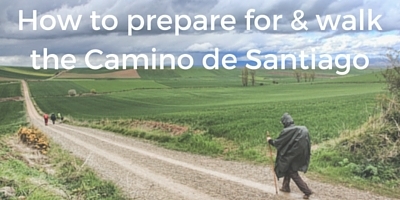
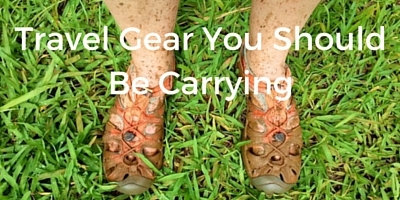
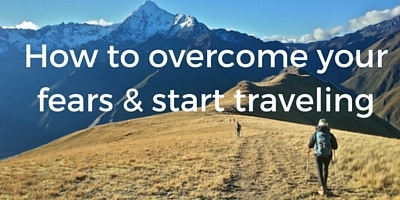
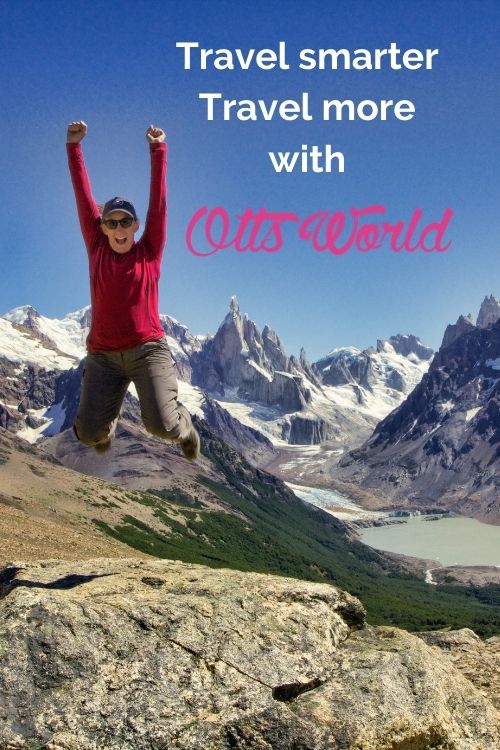
By millard mulchton July 1, 2008 - 5:42 pm
When I typed solo woman travler into google your site came up. I think its great that you have travelled but I do not consider taking tours indepedent travel. I was hoping to read of a solo womans travel expreiences and maybe learn some tips before heading off to Morocco alone this fall for 6 weeks. I never take tours. Anyway your photos are wonderful!
By Heather on her travels June 18, 2010 - 3:29 am
Fantastic feel for the sights, sounds and smells of Fez – I want to go! I feel that perhaps some of the secondary cities of Morocco might be less touristy and more authentic than Marakesh